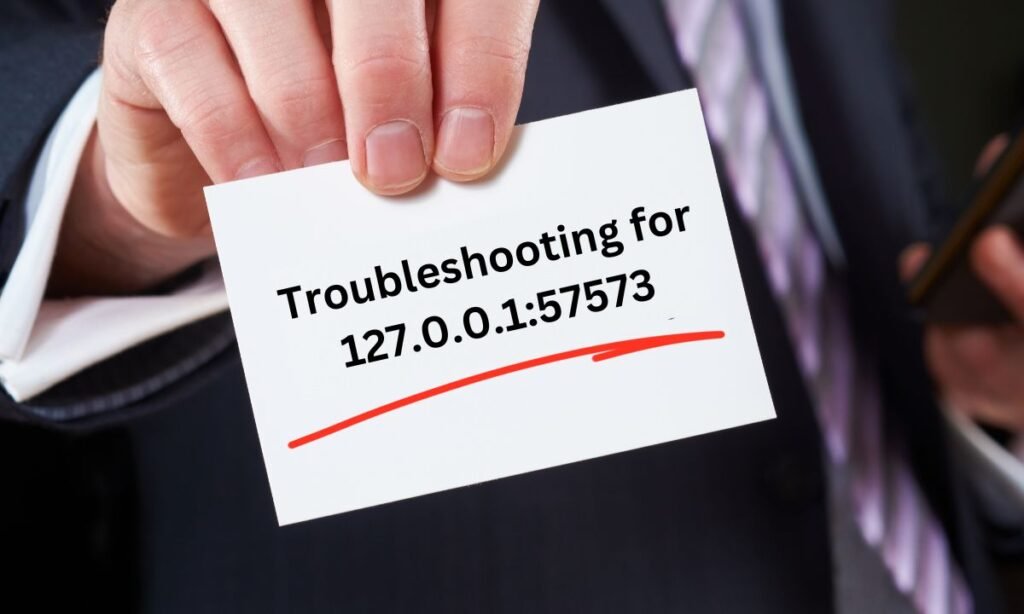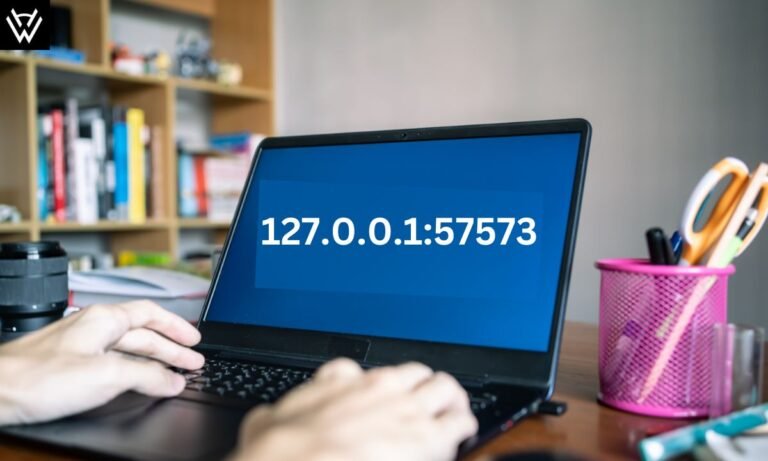It could be such a letdown when, for instance, you are simply attempting to connect to a local server, but instead come across a string of errors. Such common mistakes are mentioned below; One mistake is written in this format 127.0.0.1:57573, which is a common result of incompatibility of the web browser version with the Selenium software version. This article looks at the root causes, ways of diagnosing, and probable fixes to these mistakes in the hope you will be able to get your system running again.
Understanding 127.0.0.1:57573
The error 127.0.0.1:57573 means that there is no connection to the local server at the IP address and port number passed to it. This IP address is called the loopback address, or the local host address as it just loops back within the same machine. You have defined your server application to use the port number 57573 for connecting. This simply means that there is a mismatch of the software and systems when making a connection attempt and this may fail.
Common Causes of Connection 127. 0. 0. 1 Failures
It is possible to have many different situations that eventually result in connection failure with the error 127.0.0.1:57573. Here are some common causes
- Port Conflicts: Port conflicts arise when the defined port is in use by another application at the time of engaging the port. For instance, the operating system manages port 80 that is mostly used for web traffic; thereby, if the port is busy, your server cannot access it, resulting in connection problems. It is very important to make sure that the port you want to use is not already being used.
- Incorrect Port Number: The most commonly reported misuse is the use of incorrect port numbers. These connection attempts are extremely sensitive; if the port is invalid or if the port has been allocated to another service, the connection cannot be made. I have once been in a situation where In specifying the wrong port number such a problem can arise. Expert advice indicates that double checking, and making the right specification can sort such a problem.
- Insufficient Permissions: Some connections can be blocked due to restricted permissions of the files or directories on the local server. Make sure that the user has the appropriate level of access rights to the required objects.
- Firewall Blocking: It can disable connections to the applications which are unknown or are from untrustworthy domains. In some circumstances, if the firewall does not recognize the server as safe it may restrict access. This can be alleviated by setting up your firewall so that it permits packets to be received on the designated port.
Advanced Troubleshooting for 127.0.0.1:57573

If basic troubleshooting steps do not resolve the issue, advanced methods can be employed:
- Changing the Port Number in Apache: To change the port number in your Apache web server, follow these steps:
- Stop the Web Server: In case, if your web server such as WAMP or XAMPP is already running, turn it off.
- Open the Configuration File: Go to the “httpd. conf” file and it is located in the WAMP or XAMPP installation directory.
- Find and Change Port Settings:Comment out the lines Listen 80 and ServerName 80 . After that, change the port to 8080 since running applications on port 80 may conflict with the Apache server.
- Save the File: Stick the changes to the file known as “httpd. conf”.
- Restart the Web Server:Now WAMP or XAMPP control panel needs to be opened and the server restarted.
- Check for Running Services: If WAMP is not starting well then check for the WAMP processes in the Task Manager. Terminate all the running applications and restart WAMP.
Restart LXSS Manager Service for WSL
For Windows Subsystem for Linux (WSL) users, restarting the LXSSManager service can resolve connection issues:
- Open Run Box: Type Microsoft Windows in the search bar and click on the start button to bring up the Run bar.
- Type SERVICES. MSC: Type SERVICES. MSC and press Enter.
- Find LXSSMANAGER:In the list of services that appear on your screen type.
- Restart the Service: Go to LXSSMANAGER and Right-click on it then select Restart.
This execution of this service can assist in correcting issues with WSL and guarantee smooth operations of the server.
Access Localhost Using Port
To access your local server, follow these steps:
- Open Web Browser: Open the specific browser of your choice.
- Type Address: To access the newly created application, in the address bar of your browser, type “localhost” followed by a colon and the port number you used while creating this application. For instance, if your server uses port 80, then type ‘’localhost’’. If the port is changed to 8080, type `localhost: A new dialog button, whose ID is ‘`8080`’, has been added to the interface for creating a new dialog.
- Press Enter: This will open up your browser and suppose the local server is running on port then it will open it in your browser.
Types of 127. 0. 0. 1 Errors
Different types of 127. 0. 0. 1 errors may occur, such as:
- 127. 0. 0. 1:49342: This is a connection error in the port number to the localhost, particularly, the port 49342. It usually occurs due to the problem in port or because of the firewall activity limiitations.
- 127. 0. 0. 1:7860: Whenever the another applications uses the 7860 port, it developes the connection problems.
- 127. 0. 0. 1:8080: It causes issues while getting used by another services or when you have issue in your servers as its common use is for web servers.
- 127. 0. 0. 1:62893: Similar to the other error types, it is also a error that might disturb you. So, this tries to attempt to connect on a port but the port denies due to some issues.
All these indicate an issue with the link to the local server on the entered port. It is possible to adapt the above troubleshooting steps to resolve these errors too.
Conclusion
Fixing the 127. 0. 0. 1:To many people, 57573 errors might sound like a puzzle, but if the proper procedures are followed, one should not find it difficult. The problem can be solved by identifying the main causes and using precise diagnostics at enterprise level. Do make sure that you go through the information provided above diligently for the detailed guide on how to prevent this widespread issue. With the above observations, you will be in a better position to address and resolve issues that are related to connectivity of local servers.
FAQs
Ans: It is a connection failure error indicating an issue with accessing a local server on the specified port.
Ans: Common causes include port conflicts, incorrect port numbers, insufficient permissions, and firewall blocking.
Ans: Change the port number in your server configuration file and restart the server.
Ans: Open the Run box, type SERVICES.MSC, find LXSSMANAGER in the list, and select Restart.
Ans: Type “localhost” followed by a colon and the port number in your web browser’s address bar.
Also Read About:
